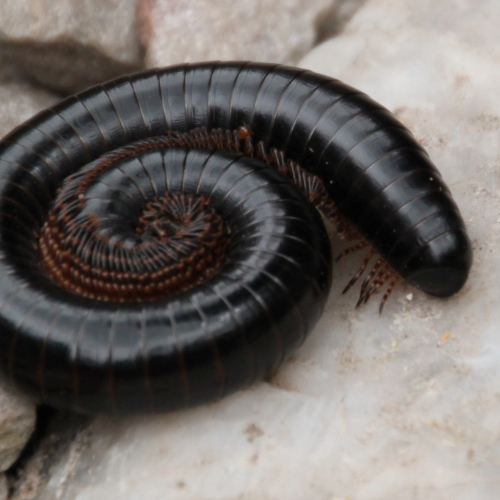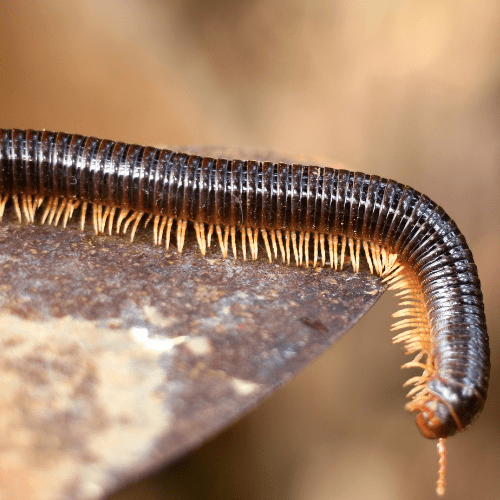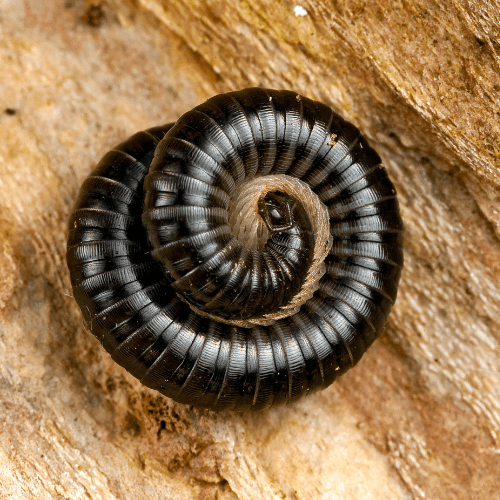Millipedes
Introduction to
Millipedes are common arthropods found in gardens and homes, known for their many legs and slow, deliberate movements. While they play a crucial role in the decomposition of organic matter, they can become a nuisance when they invade homes in large numbers. This guide provides detailed information on how to recognize, understand, and manage millipedes, including preventive measures and professional pest control solutions.
Recognition
Millipedes are elongated, cylindrical arthropods with segmented bodies, each segment bearing two pairs of legs. They range in size from a few millimeters to several inches long and are typically brown or black in color. Some species may have red or orange markings. Unlike centipedes, millipedes move slowly and coil into a spiral when threatened. They have short antennae and are often found in moist environments. Millipedes can be distinguished by their rounded body and numerous legs, with the number of legs varying depending on the species and age.
Biology
Millipedes belong to the class Diplopoda and undergo incomplete metamorphosis, developing from eggs to nymphs to adults. Females lay eggs in soil or organic matter, and the eggs hatch into small nymphs that resemble miniature adults. Nymphs go through several molts, adding more body segments and legs with each molt. Millipedes primarily feed on decaying plant material, fungi, and other organic matter, playing an essential role in the decomposition process. They are beneficial to gardens as they help break down organic matter and recycle nutrients into the soil.
Habits
Millipedes are nocturnal and prefer dark, damp environments. They are commonly found under rocks, logs, mulch, and leaf litter in gardens. Indoors, they are often found in basements, crawl spaces, and bathrooms, seeking moisture. Millipedes are detritivores, feeding on decaying organic matter, and do not pose a threat to humans or pets. However, they can become a nuisance when they enter homes in large numbers, especially during periods of heavy rain or drought when they seek refuge from unfavorable conditions.
Prevention
Preventing millipede infestations involves reducing moisture and eliminating entry points. Use dehumidifiers in damp areas like basements and bathrooms to keep these spaces dry. Seal cracks and gaps around doors, windows, and foundations to prevent millipedes from entering. Ensure that gutters and downspouts direct water away from the house to keep the foundation dry. Remove leaf litter, mulch, and other organic debris from around the home’s exterior to reduce outdoor harborage areas. Regularly inspect and maintain door and window screens to keep millipedes out.
Professional
When millipedes become a persistent problem, professional pest control services can offer effective solutions. STL Pest Control provides comprehensive inspections and tailored treatment plans to address millipede infestations. Their methods include moisture control recommendations, sealing entry points, and targeted treatments to eliminate existing millipedes. Professional services ensure that the infestation is managed efficiently and safely, reducing the inconvenience and potential distress caused by these pests.



Our Office









